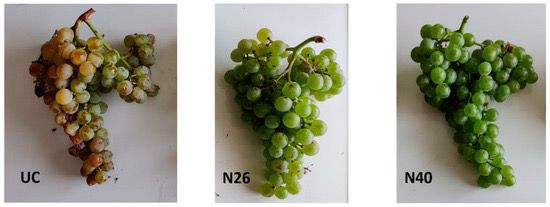
By virtue of its findings, the research provides practical insights for winemakers facing climate change with a focus on the sustainability of viticultural systems in extreme Mediterranean environments.
Main Results
The study, “Adapting Viticulture to Climate Change: Impact of Shading in Sicily,” concluded that shading levels of less than or close to 30 percent may be less suitable for warm environments for the wine sector.
For the scholars, a shading level of 40 percent could already be an optimal compromise that could achieve the desired results in terms of heat stress mitigation and controlled ripening.
Results showed that shading effectively delayed vine phenology and altered grape ripening, with significant reductions in sugar content (up to 10 percent) and increases in total acidity (up to 10 percent) at harvest compared to unshaded vines.
However, shading also reduced berry size, resulting in decreased bunch weight and yield per plant (up to 15%). These results highlight the potential of shade nets, while also emphasizing the role of economic and operational factors.
Comparison of the two shading levels tested revealed that shading of 40 percent was more effective in mitigating the negative impacts of temperature extremes, particularly in warmer conditions, while shading of 26 percent showed benefits especially in the climatically milder year.
Higher shading levels (70 percent or more), however, may pose long-term risks to vine vigor, reserve accumulation, and overall productivity.
Future research should aim to validate the long-term suitability of moderate shade levels, such as 40 percent, under different environmental conditions and among different agricultural varieties.
In addition, explains the research team composed of five researchers from the University of Palermo and an expert from Cantine Settesoli Soc. Coop. Agricola, the evaluation of the economic feasibility and large-scale applicability of shading practices will be essential to ensure the sustainability and productivity of vineyard systems in the context of climate change.
Background
Climate change is a major challenge for global viticulture. Traditional wine-growing regions, such as those in the Mediterranean, are experiencing higher average temperatures and concomitant decreases in rainfall.
Rising average temperatures accelerate the phenological development of vines, leading to rapid accumulation and concentration of sugars and decreased acidity.
There is no universal consensus on the optimal shading percentage or type of net to use. High shading percentages (70-75%) are often effective in mitigating heat stress, but can have a negative impact on shoot fertility on reserve accumulation.
Excessive shading can reduce berry size, bunch weight, and yield.
In contrast, moderate shading can protect berries from overexposure, reducing dehydration and preserving their integrity.
The study: methodology
The study, “Adapting Viticulture to Climate Change: Impact of Shading in Sicily,” analyzed the impact of two-level (26 percent and 40 percent) black shading nets on grapevine phenology, vegetative growth, yield and grape ripening as a potential strategy to mitigate the negative effects of increased temperatures and reduced rainfall.
Black shade nets were applied during the pea berry stage (BBCH 75).
The study was conducted for two consecutive seasons (2021-2022) in two commercial vineyards located in southwestern Sicily, Italy. The vineyards were located at coordinates 37°35′28″ N, 13°00′44″ E and 37°38′19″ N, 12°59′43″ E, at an altitude of approximately 150 m and 305 m above sea level, respectively.
The first vineyard was planted with Grillo grafted on rootstock 1103P, while the second was planted with Syrah grafted on rootstock 140Ru. Both vineyards were oriented NW-SE, with a plant spacing of 1 m and row spacing of 2.4 m.
The vines were grown with a vertical shoot positioning system (VSP) and pruned to Guyot, leaving 10 shoots on the fruiting cane and 2 shoots on the spur. The soils in both vineyards were predominantly loamy.
Conventional management practices were adopted to control powdery mildew (Erysiphe necator) and downy mildew (Plasmopara viticola). Irrigation was not provided, as the vineyards relied solely on rainfall during the growing season.
The climate of the region was classified as semi-arid according to the Köppen-Geiger classification system. Microclimatic conditions within the canopy were monitored with sensors that recorded temperature and relative humidity continuously at 30-minute intervals from the installation of shade nets until harvest.
